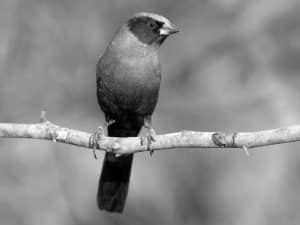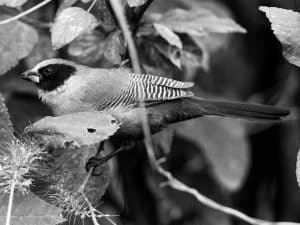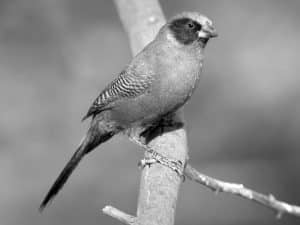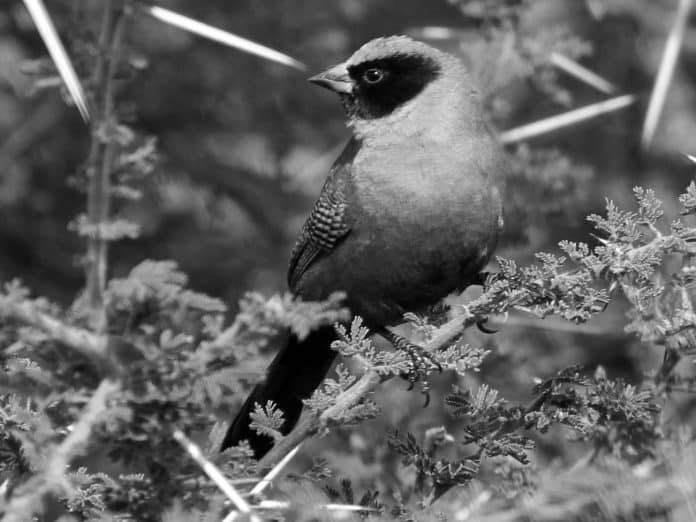Introduction to the Black-faced Waxbill
Tucked away in the lush landscapes of Tanzania lies a true avian gem – the captivating Black-faced Waxbill. This diminutive yet striking bird is a true delight for birdwatchers and nature enthusiasts alike. With its vibrant plumage, intriguing behavior, and unique habitat, the Black-faced Waxbill in Tanzania is a treasure to behold in the heart of East Africa.

As you embark on your journey to explore the wonders of Tanzania, prepare to be enchanted by the allure of this remarkable species. The Black-faced Waxbill is a true ambassador of the region’s avian diversity, and discovering its enchanting presence will undoubtedly enrich your wildlife experience.
Habitat and Distribution of the Black-faced Waxbill in Tanzania
The Black-faced Waxbill is primarily found in the central and southern regions of Tanzania, thriving in a variety of habitats that include:
- Savanna Woodlands: These expansive, open areas dotted with acacia trees and other hardy vegetation provide the perfect home for the Black-faced Waxbill, offering a diverse array of food sources and nesting opportunities.
- Riverine Forests: Along the banks of Tanzania’s winding rivers and streams, the Black-faced Waxbill can be spotted flitting among the lush, verdant foliage, taking advantage of the abundant water and shelter.
- Cultivated Areas: Surprisingly, these small birds have adapted to live in close proximity to human settlements, often seen foraging in agricultural fields and gardens, adding a delightful touch of nature to the human landscape.
Regardless of the specific habitat, the Black-faced Waxbill’s presence is a testament to the ecological richness of Tanzania, showcasing the region’s remarkable biodiversity.
Physical Characteristics of the Black-faced Waxbill
The Black-faced Waxbill is a true sight to behold, with a striking and distinctive appearance that sets it apart from other waxbill species. Some of the key physical characteristics of this captivating bird include:
- Size: Measuring approximately 11-12 cm in length, the Black-faced Waxbill is a small, delicate-looking bird.
- Plumage: The bird’s most striking feature is its jet-black face, contrasted by its vibrant red beak and bright orange-red rump and upper tail coverts. The rest of its body is a soft, grayish-brown, adding to its overall visual appeal.
- Beak: The Black-faced Waxbill’s beak is a remarkable feature, being short, thick, and conical in shape, perfectly adapted for its seed-based diet.
- Legs and Feet: With its slender, delicate legs and small, sharp claws, the Black-faced Waxbill is well-equipped for perching and hopping among the branches and foliage of its preferred habitats.
The combination of these physical attributes makes the Black-faced Waxbill a true standout among the avian residents of Tanzania, captivating the attention of all who are fortunate enough to catch a glimpse of this enchanting bird.
Behavior and Feeding Habits of the Black-faced Waxbill
The Black-faced Waxbill is a social and lively species, often observed in small flocks that forage and move together through their preferred habitats. Some of the key behavioral and feeding characteristics of this bird include:
- Foraging: These waxbills are primarily seed-eaters, using their sharp beaks to skillfully extract seeds from a variety of grasses and other plants. They are also known to supplement their diet with small insects and berries.
- Vocalizations: The Black-faced Waxbill has a diverse repertoire of calls, including high-pitched chirps, trills, and whistles, which it uses to communicate with its flock members and defend its territory.
- Nesting: The birds construct their nests using a variety of materials, such as grass, leaves, and feathers, often placing them in the dense foliage of shrubs or small trees.
- Breeding: The breeding season for the Black-faced Waxbill typically coincides with the onset of the rainy season, when the availability of food is at its peak.
Observing the Black-faced Waxbill’s captivating behaviors and feeding habits in its natural habitat is a true delight for birdwatchers, providing a unique window into the intricate lives of these enchanting birds.
Conservation Status and Threats to the Black-faced Waxbill

While the Black-faced Waxbill is currently classified as a species of Least Concern by the International Union for Conservation of Nature (IUCN), it is essential to remain vigilant about the potential threats facing this species. Some of the key challenges that the Black-faced Waxbill may encounter include:
- Habitat Loss: The expansion of human settlements, agricultural practices, and infrastructure development can lead to the fragmentation and degradation of the Black-faced Waxbill’s natural habitats, potentially disrupting its breeding and foraging patterns.
- Illegal Wildlife Trade: The Black-faced Waxbill’s striking appearance and unique behaviors make it a target for the illegal pet trade, which can have a detrimental impact on the species’ population.
- Climate Change: Shifts in temperature and precipitation patterns due to climate change can alter the availability of the Black-faced Waxbill’s preferred food sources and nesting sites, potentially affecting its long-term survival.
To ensure the continued presence of this enchanting bird in Tanzania’s landscapes, it is crucial to support conservation efforts and raise awareness about the importance of preserving the region’s natural habitats and biodiversity.
Birdwatching Tips for Spotting the Black-faced Waxbill in Tanzania
Seeking out the Black-faced Waxbill during your birdwatching adventures in Tanzania can be a truly rewarding experience. Here are some tips to increase your chances of spotting this captivating bird:
- Know the Habitat: Familiarize yourself with the preferred habitats of the Black-faced Waxbill, such as savanna woodlands, riverine forests, and cultivated areas, and focus your search efforts in these locations.
- Listen for Vocalizations: The Black-faced Waxbill’s distinctive calls, including high-pitched chirps and trills, can often be heard before the bird is spotted, so be attentive to these auditory cues.
- Scan Carefully: These small birds can be easily overlooked, so scan the foliage and branches of the surrounding vegetation methodically, keeping your eyes peeled for their vibrant plumage.
- Visit During the Breeding Season: The best time to spot the Black-faced Waxbill is during the breeding season, typically coinciding with the rainy season, when the birds are more active and vocal.
- Patience and Persistence: Birdwatching often requires a good deal of patience and persistence, so be prepared to spend time observing the area and waiting for the Black-faced Waxbill to make an appearance.
By following these tips and embracing the thrill of the search, you’ll be well on your way to encountering the captivating Black-faced Waxbill during your birdwatching adventures in Tanzania.
Other Bird Species Found in the Same Habitat as the Black-faced Waxbill
The Black-faced Waxbill is just one of the many remarkable bird species that call Tanzania’s diverse habitats home. Some of the other avian residents you may encounter in the same areas as the Black-faced Waxbill include:
| Bird Species | Habitat |
|---|---|
| Superb Starling | Savanna Woodlands |
| Lilac-breasted Roller | Riverine Forests |
| Yellow-billed Hornbill | Cultivated Areas |
| Crimson-breasted Shrike | Savanna Woodlands |
| Blue-cheeked Bee-eater | Riverine Forests |
These birds, along with the Black-faced Waxbill, contribute to the rich tapestry of Tanzania’s avian diversity, making the country a true haven for birdwatchers and nature enthusiasts alike.
Famous Birding Locations in Tanzania for Observing the Black-faced Waxbill
Tanzania boasts a wealth of renowned birding destinations that offer prime opportunities to spot the captivating Black-faced Waxbill. Some of the most famous locations include:
- Serengeti National Park: This iconic park is home to a diverse array of habitats, including the savanna woodlands and riverine forests that the Black-faced Waxbill thrives in.
- Tarangire National Park: Known for its impressive elephant populations, Tarangire also harbors a rich avian community, including the elusive Black-faced Waxbill.
- Mikumi National Park: Situated in the heart of Tanzania, Mikumi National Park is a prime destination for birdwatchers, with the Black-faced Waxbill being one of its most sought-after residents.
- Ruaha National Park: This vast and rugged park in southern Tanzania is a haven for the Black-faced Waxbill, offering visitors a chance to immerse themselves in the bird’s natural habitat.
- Udzungwa Mountains National Park: The lush, forested landscapes of the Udzungwa Mountains provide a unique setting for spotting the Black-faced Waxbill, as well as a host of other remarkable bird species.
By exploring these renowned birding locations, you’ll have the opportunity to witness the Black-faced Waxbill in its full glory, surrounded by the breathtaking natural beauty of Tanzania.
Interesting Facts about the Black-faced Waxbill

As you delve deeper into the world of the Black-faced Waxbill, you’ll uncover a wealth of fascinating facts about this captivating bird:
- The Black-faced Waxbill is a member of the Estrildidae family, which includes various species of finches and waxbills found across Africa and Asia.
- These birds are known for their unique courtship displays, which involve the male and female perching side by side and gently preening each other’s feathers.
- The Black-faced Waxbill’s diet is primarily composed of small seeds, but it will also supplement its meals with insects and berries, particularly during the breeding season.
- These birds are highly social and often form large flocks, which can include other waxbill species, as they forage and move through their preferred habitats.
- The Black-faced Waxbill’s striking appearance, with its jet-black face and vibrant red beak, has made it a popular target for the illegal pet trade in some regions.
Uncovering these intriguing facts about the Black-faced Waxbill will only deepen your appreciation for this remarkable species and its role in the rich tapestry of Tanzania’s avian diversity.
Conclusion: Preserving the Beauty of the Black-faced Waxbill in Tanzania
The Black-faced Waxbill is a true gem of Tanzania’s avian landscape, captivating all who are fortunate enough to witness its enchanting presence. From its vibrant plumage and unique behaviors to its role in the region’s diverse ecosystems, this small but mighty bird is a testament to the natural wonders that Tanzania has to offer.
As you plan your next birdwatching adventure in Tanzania, make sure to keep the Black-faced Waxbill on your radar. By supporting conservation efforts and raising awareness about the importance of preserving the country’s rich biodiversity, you can play a crucial role in ensuring that this captivating species continues to thrive for generations to come. Embark on your journey to discover the beauty of the Black-faced Waxbill and unlock the secrets of Tanzania’s avian paradise.

































